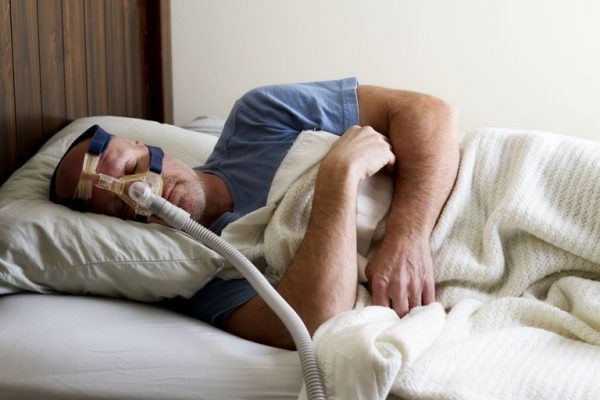Pressure, Ramp Up What Does this features Means?
Comfort Setting May Reduce Mask Leak and Ease Insomnia
If you use continuous or bilevel positive airway pressure (PAP) to treat your obstructive sleep apnea, you may wonder: What does the ramp up feature mean on a CPAP or BiPAP machine? Learn how this feature can reduce your starting pressure to improve your ability to fall asleep and why it may undermine your treatment if used excessively. Consider reasons why the ramp may be overused, such as may occur with mask leak or insomnia.
Discover how to set your ramp and what to do if you find you need it too much.
What Is a Ramp on CPAP?
Most modern CPAP or bilevel machines have a comfort setting called a ramp. As the word implies, it allows the machine to start at a lower pressure and then gradually to increase the pressure over a set period of time. The beginning of the ramp, with a lower pressure, may make it easier to fall asleep. Once you have fallen asleep, the pressure can be increased to the range that is needed to keep your upper airway from collapsing during sleep.
How Is the Ramp Set on CPAP?
There are multiple PAP machine models available from distinct manufacturers and various iterations over the past decades. Not all have a ramp feature, and the ability to access it will vary based on the model. It may be easiest to review your device’s manual or to speak with your durable medical equipment provider or sleep specialist to access the setting.
There are two variables to consider in the ramp setting. First, the starting pressure should be comfortable. It is generally lower than the pressure that may be required later to support your breathing once you’ve fallen asleep. The lowest possible ramp setting is 4 centimeters of water pressure (CWP). If it is set too low, you may struggle to get enough air and may request that it be turned up.
Second, the duration of this starting pressure will vary in 5-minute intervals from zero (if off) to 45 minutes. This duration should be slightly longer than the average amount of time it takes you to fall asleep. If you feel the pressure becoming stronger, your ramp is likely too short. In addition, newer devices may have an automatic ramp feature that detects changes in the regularity of your breathing with the onset of sleep as an indicator that the pressure can be turned up.
How to Use a CPAP Ramp and Problems When It Is Overused
It is advised to use your ramp to help ease yourself into sleep without having to contend with an uncomfortable pressure. Once the ramp ends, the device will increase to your lowest therapeutic pressure (which may be either fixed or further adjusted during the night as needed with an AutoCPAP or Autobilevel machine).
If you wake in the night and the pressure has become uncomfortably high, it is possible to reset the ramp and allow the pressure to be lowered again. This may be desirable if you have awakened for any reason, including to urinate. It may also be helpful if your mask has started to leak excessively and has become disruptive due to noise or the discomfort of the air flow. This will allow you time to fall back asleep at a lower, more comfortable pressure.
It is possible to overuse your ramp and this can cause some problems. When reviewing your usage data, your sleep specialist may note multiple ramp resets throughout the night.
This might suggest the presence of excessive mask leak, pressure levels that are too high, or coexisting insomnia. Repeated resets of the ramp can reduce the effectiveness of therapy. If you require a pressure of 10 CWP to support your breathing, and you consistently reset your ramp to 4 CWP for 45-minute intervals through the night, you will have long stretches when your sleep apnea is not adequately treated.
For those who are needing to repeatedly reset the ramp, think about the underlying cause. If you are waking to urinate, or due to mask leak, address these underlying problems. You may benefit from a mask fitting to explore a new option. In some cases, it may be necessary to switch to bilevel therapy, as this treatment can make it more comfortable to breathe both in and out.
Speak with your equipment provider or a sleep specialist if you need additional assistance in optimizing the settings of the ramp on your PAP machine.



